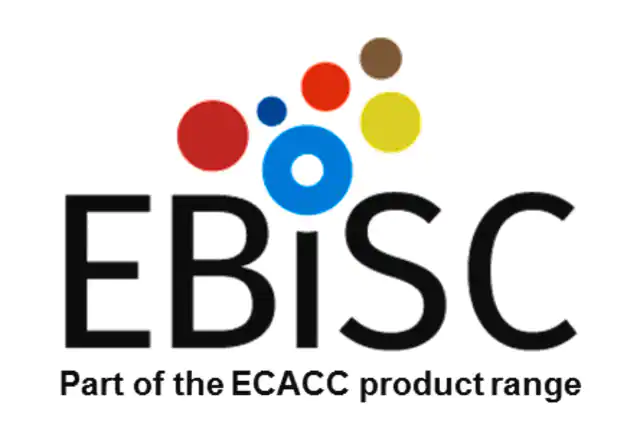您的位置:首页 > 产品中心 > SIGi001-A-5
产品别名
SIGi001-A-5
EBiSC iPSC Line
iPSC
Human iPSC
iPS Cell
Induced Pluripotent Stem Cell Line
产品性质
| biological source【生物来源】 | human epithelium |
| reprogramming method【重编程方法】 | retrovirus |
| description【描述】 | age (20-24) |
| manufacturer/tradename | EBiSC™ |
| gender【性别】 | female |
| growth mode【生长模式】 | adherent (pluripotent) |
| technique(s) | cell culture | stem cell: suitable |
| relevant disease(s)【相关疾病】 | frontotemporal dementia |
| shipped in【运输】 | dry ice |
| storage temp.【储存温度】 | −196℃ |
基本信息
| General description【一般描述】 | Induced pluripotent stem cells (iPSCs) are adult cells that have been reprogrammed to an embryonic stem cell–like state. The cells can replicate indefinitely or, under controlled conditions, can be differentiated into any other cell type such as nerve, heart or liver cells. Medical researchers are able to use iPS cells to test how different patients might respond to new drugs or to analyse how genetic diseases develop. The EBiSC stem cell bank is a collection of human iPS cells available to academic and commercial researchers for use in disease modelling and other forms of stem cell research. The initial collection has been generated from a wide range of donors representing specific disease backgrounds and healthy controls. EBiSC has established many routine procedures for collecting, expanding and characterizing human iPS cell lines. The stem cell bank includes iPSC cell lines derived from neurodegenerative diseases (Alzheimer′s Disease, Parkinson′s Disease, Dementia, Motor Neuron Disease (ALS) - and Huntington′s Disease), eye and heart diseases, and lines from healthy control donors for age and sex matching. |
| Cell Line Origin【细胞系来源】 | Depositor sigma-aldrich |
| Cell Line Description【细胞系描述】 | Derivation Primary cell type: Epithelium Reprogramming method Vector type: Integrating Vector: Virus Virus type: Retrovirus Gene list: KLF4 MYC POU5F1 SOX2 Have the reprogramming vectors been silenced: Unknown Characterization Analysis of Undifferentiated Cells Marker expression: SSEA-1(-)TRA 1-60(+)SSEA-4(+)POU5F1 (OCT-4)(+) Differentiation potency Ectoderm: In vitro spontaneous differentiation Marker Expressed:NeuroD(+)PAX6(+) Endoderm: In vitro spontaneous differentiation Marker Expressed:GATA6(+)TBX5 (+) Mesoderm: In vitro spontaneous differentiation Marker Expressed:AFP(+)SERPINA(+) Microbiology / Virus Screening HIV 1: - HIV 2: - Hepatitis B: - Hepatitis C: - Mycoplasma: - Sterility Inoculation for microbiological growth: No Contaminants Detected Mycoplasma: Not Detected Viability: Viable post-cryopreservation Genotyping Karyotyping Passage number: 33 Cell line karyotype: No autosomal or sex chromosome aneuploidies detected Karyotyping method: BoBs Genotyping STR/Fingerprinting: A 16 allele profile has been recorded and data is available upon request, after cell line purchase. Genetic Modification Disease/phenotype related modifications Disease: Frontotemporal dementia Type of modification: Isogenic Gene: MAPT Chromosome location: 17q21.31 Nucleotide sequence HGSV: NM_005910.5:c.901C>T Protein sequence HGSV: NP_005901.2:p.Pro301Ser Zygosity: Heterozygous Target locus modification: Mutated |
| Linkage【联系】 |
Note: EAUA and CLIP must be completed before order fulfillment |
| Subculture Routine【传代培养常规】 | Medium: mTeSR® Passage method: EDTA Matrix: Matrigel® / Geltrex® CO2 concentration: 5% O2 concentration: 21% Temperature: 37℃ |
| Legal Information【法律信息】 | EBiSC is a trademark of Fraunhofer-Gesellschaft GELTREX is a registered trademark of Life Technologies Corporation Matrigel is a registered trademark of Corning, Inc. mTeSR is a registered trademark of WiCell Research Institute, Inc. |
安全信息
| Storage Class Code【储存分类代码】 | 10 - Combustible liquids |
| WGK | WGK 3 |





